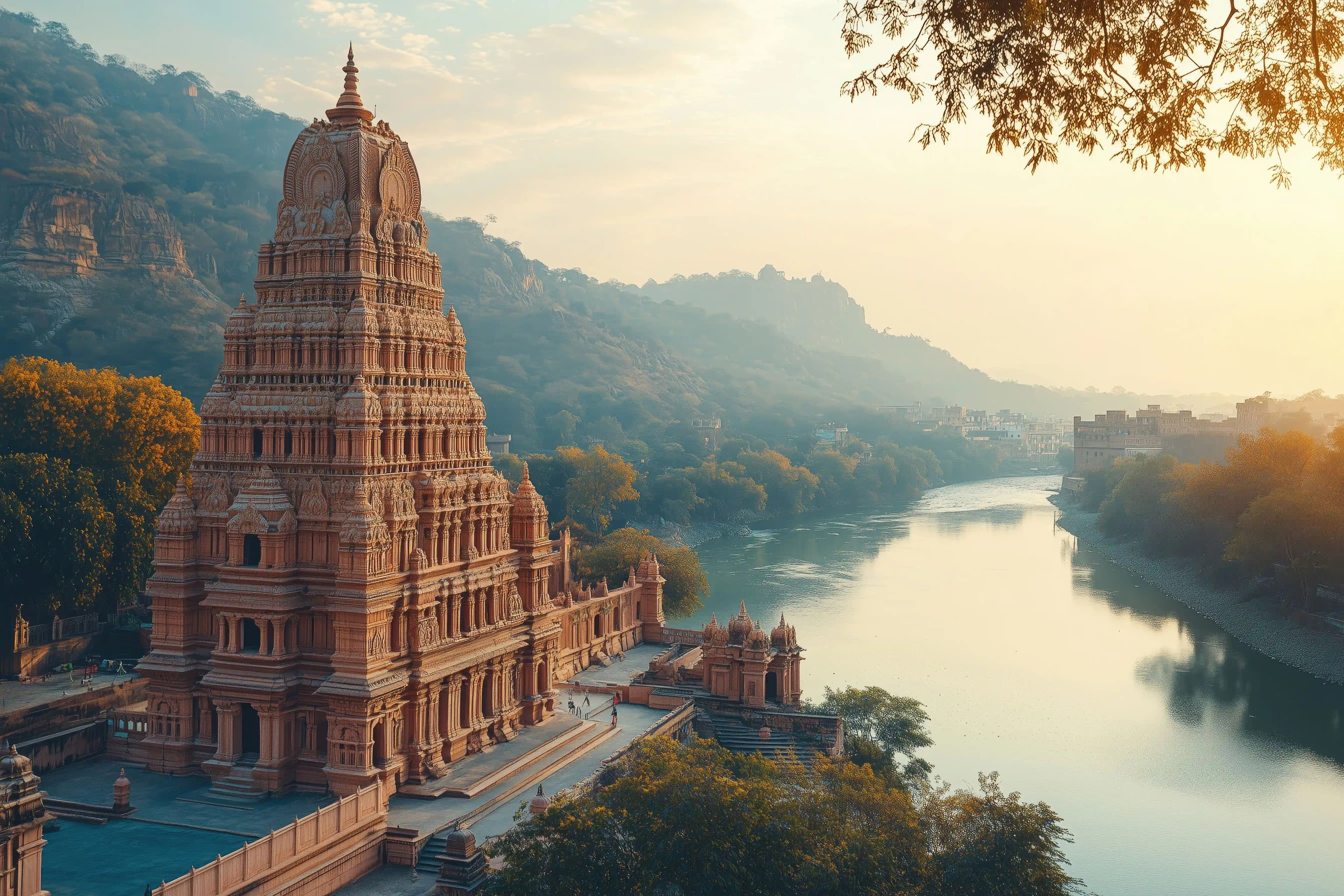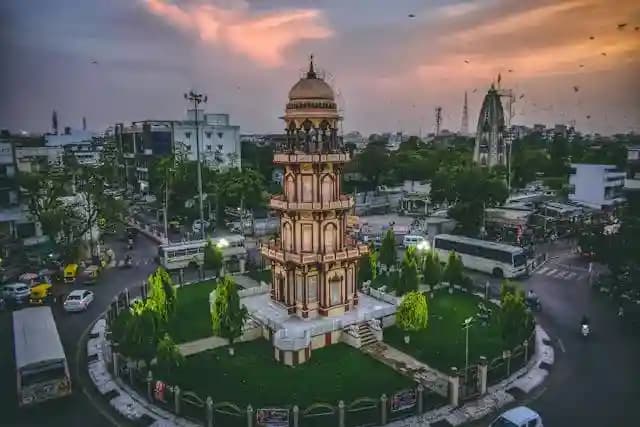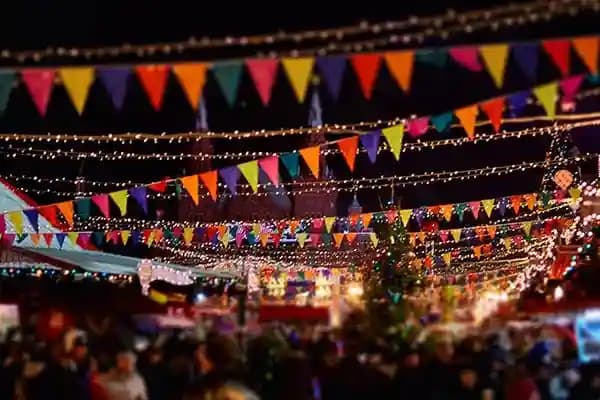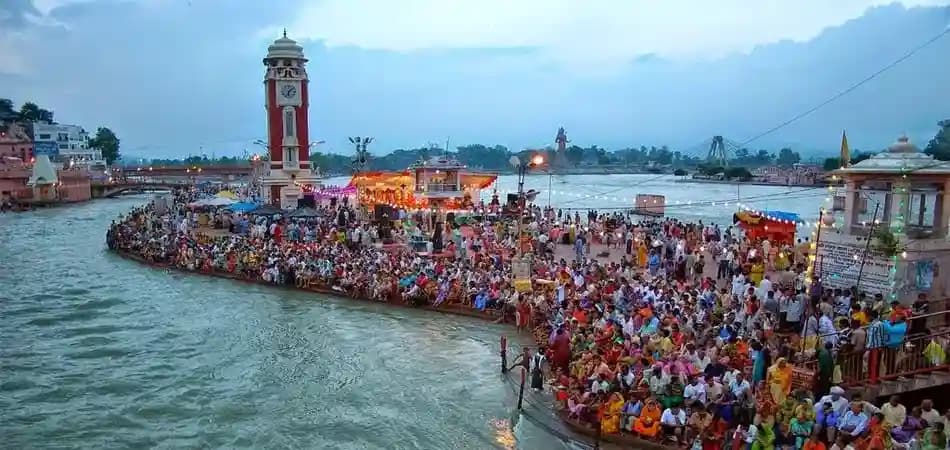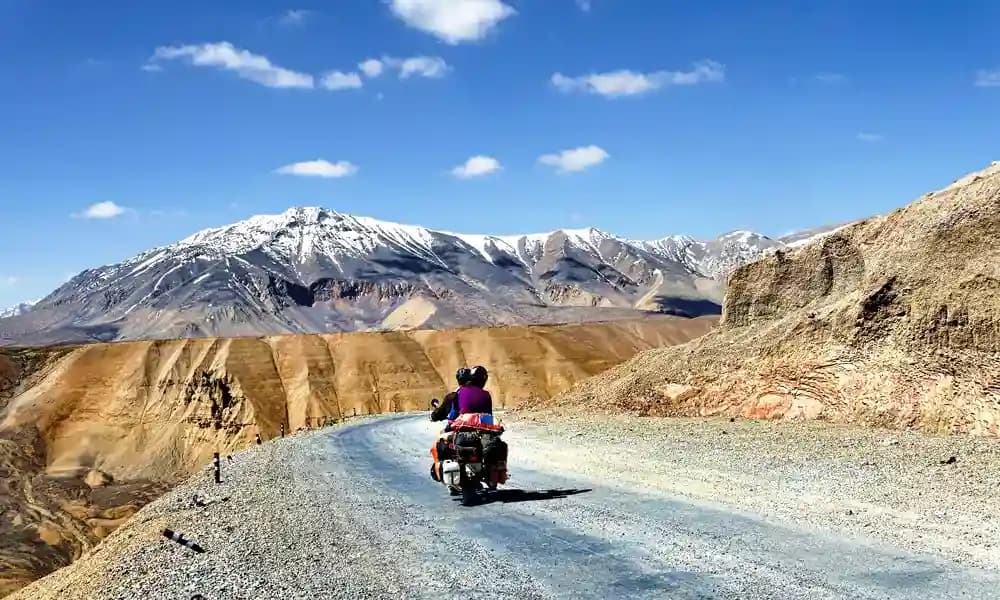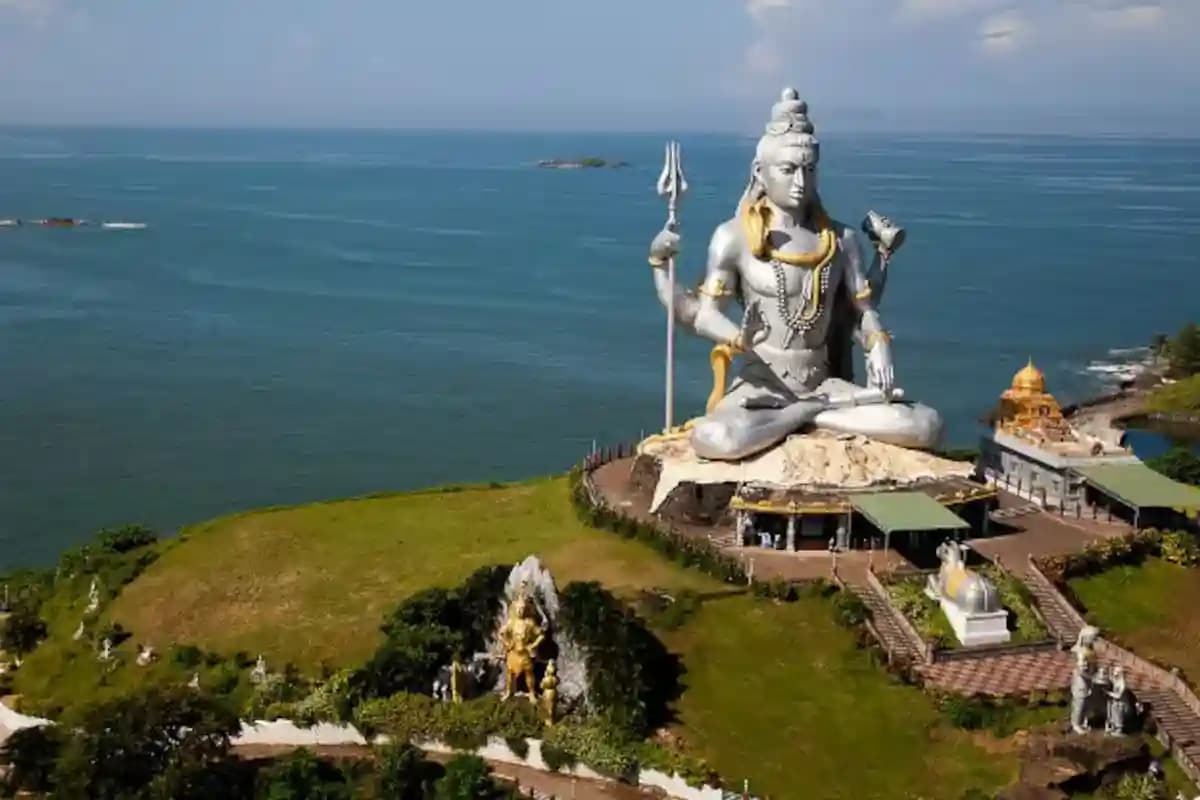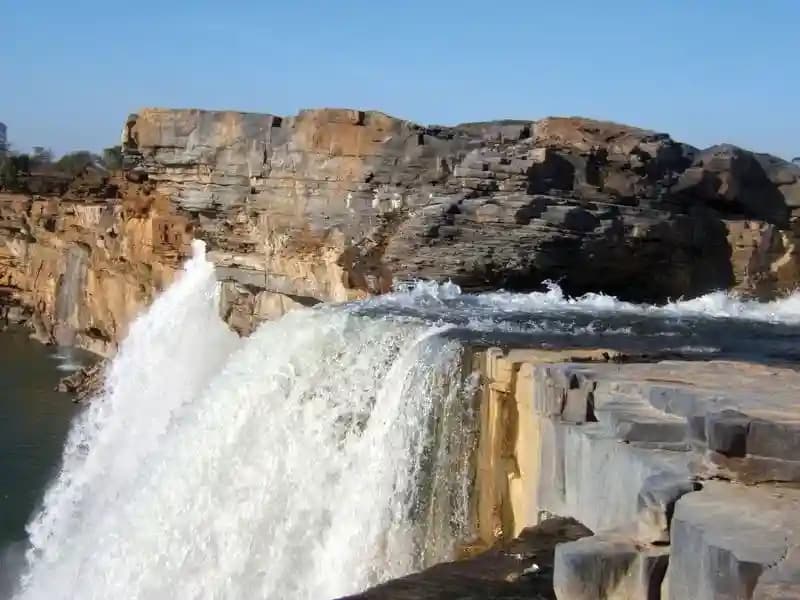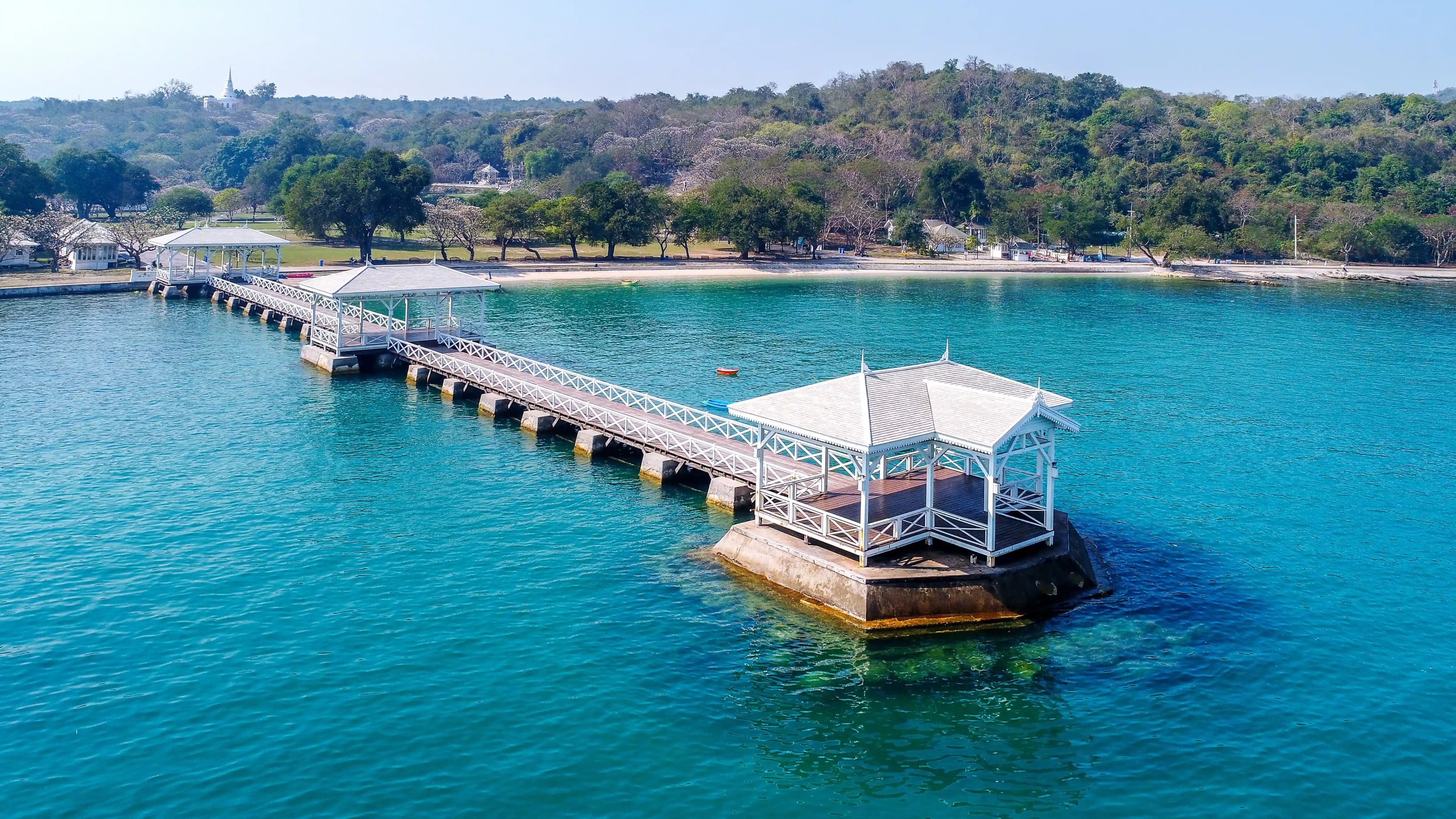India, a country highlighted for its rich cultural diversity and significant spiritual past, is home to a plethora of temples devoted to various gods. Some of these, however, celebrate the Sun God's life-giving force. Sun temples in India are a tribute to the country's architectural excellence and deep respect for the celestial body that supports life on Earth. These sun temples are more than simply places of devotion; they are windows into historic Indian civilization, revealing intricate workmanship, astronomical expertise, and an in-depth knowledge of the universe.
So shackle up for an intriguing tour throughout India to discover the spectacular sun temples that tell stories of the divine, devotion, and artistic grandeur.
Here’s A List Of The Marvelous Sun Temples Of India Depicting The By-Gone Era:
India, with its rich history and culture, has some of the most incredible temples devoted to the Sun God. These ancient Sun Temples of India are remarkable examples of architectural splendor and spiritual dedication from a bygone period. From the famed Konark Sun Temple in Odisha to hidden treasures in the hinterlands, this list takes you through India's extraordinary Sun Temples, which continue to fascinate the imaginations of both tourists and historians.
The Sun Temple of Konark, Odisha: A Chariot for the Sun
The Sun Temple at Konark in Odisha is perhaps the most iconic sun temple in India, and without a doubt one of the world's best examples of temple building. This UNESCO World legacy Site, constructed in the 13th century by King Narasimhadeva I of the Eastern Ganga dynasty, represents India's rich legacy.
1. A Chariot to the Sun
The design of Konark's Sun Temple differs from others. The temple is constructed like a massive chariot, with twelve pairs of finely carved stone wheels carried by seven sprinting horses, representing the chariot of Surya, the sun god. The attention to detail is astounding, with every piece of the temple, from the wheels to the horses, fulfilling both aesthetic and symbolic functions.
2. Sculptural Marvels
Apart from its artistic elegance, Konark's Sun Temple is well-known for its magnificent sculptures. The temple walls are ornamented with beautiful sculptures depicting various aspects of existence, including heavenly beings, celestial dancers, animals, and legendary creatures. These sculptures showcase the artistic talent of the craftspeople who created them.
The magnificence of Konark's Sun Temple, along with its rich symbolic meanings, has made it a must-see for both tourists and history enthusiasts.
Martand Sun Temple in Kashmir: A Forgotten Marvel
The Martand Sun Temple in the scenic valley of Kashmir is another spectacular sun temple in India's far north. This 8th-century temple, created by Lalitaditya Muktapida of the Karkota dynasty, is now in ruins but was once a majestic emblem of the region's spiritual and architectural achievements.
1. A Temple With an Outside View
Perched on a mountaintop, the Martand Sun Temple provides breathtaking views of the neighboring Kashmir Valley. The temple's design is a unique combination of Gandhara, Gupta, and Kashmiri architectural features, separating it from other Sun Temples in India. Though the temple has been damaged by centuries of invasions, its remnants nonetheless serve as a reminder of its previous magnificence.
2. Modhera Sun Temple in Gujarat: A Tribute to Time
Our next visit is Gujarat, where the Modhera Sun Temple represents the Solanki dynasty's great history. Built in the beginning of the 11th century by King Bhima I, this temple is devoted to Surya, the Sun God, and is a work of art on a level with India's best-known temples.
3. Surya Kund - The Sacred Stepwell
The Surya Kund, a massive rectangular stepwell in front of the Modhera Sun Temple, is one of the temple's most remarkable features. The stepwell is an artistic treasure in and of itself, with over 100 finely carved tiny shrines bordering its stairs. This stepping tank was used not only for ritual cleansing before entering the temple, but also as a gathering area for visitors and devotees.
4. The Sabha Mandapa
Another interesting aspect of the Modhera Sun Temple is the Sabha Mandapa, or assembly hall. This hall, which was once used for religious meetings and rites, is decorated with beautifully carved pillars and panels representing scenes from Hindu mythology. The hall's ceiling is decorated with exquisite geometric decorations that add to the entire visual beauty.
Osian Sun Temple in Rajasthan: A Desert Delight
Your vacation would be incomplete without a visit to Rajasthan's sun temples, where the Osian Sun Temple serves as a spectacular reminder of the state's architectural talent. This 8th-century temple, located in the desert town of Osian, is part of a larger temple site that includes Hindu and Jain structures.
1. A Temple In The Sands
The Osian Sun Temple, dedicated to Surya, is a historical marvel that displays Nagara temple building. The temple's shikhara is artistically carved, depicting gods, goddesses, and legendary themes. The sanctuary features a stunning Surya god decked with seven horses, representing the sun's chariot.
One of the most notable elements of the Osian Sun Temple is the Torana, or curved entrance, which leads into the temple complex. This doorway is ornately embellished with sculptures of Hindu deities and heavenly creatures, adding to the temple's magnificence.
2. A Mix of Cultures
The Osian temple complex is a one-of-a-kind mix of Hindu and Jain architecture that reflects the peaceful coexistence of many religious communities in Rajasthan throughout the early medieval period. The adjacent Jain temples, with their beautifully carved pillars and domes, highlight the region's creative and cultural variety.
Set against the background of the Thar Desert, the Osian Sun Temple provides an intriguing peek into Rajasthan's historical and spiritual legacy, making it a must-see for anybody visiting the area.
Katarmal Sun Temple in Uttarakhand: A Hidden Gem
The Katarmal Sun temple, tucked away in the tranquil hills of Uttarakhand, is a less well-known but equally interesting shrine. The Katyuri monarchs built this temple in Almora in the ninth century, and it is one of the most significant sun temples in northern India.
1. A Spiritual Getaway in the Hills
The Katarmal Sun Temple is devoted to Burhadita, another incarnation of the Sun God. The temple building consists of a main shrine and 45 smaller shrines that surround it. Though the temple has endured years of negligence and deterioration, attempts are underway to restore it to its original beauty.
2. Architectural Significance
The temple is designed in the Nagara style, with a tall shikhara (tower) and beautifully carved stone pillars. The sculptures on the temple walls represent deities, celestial creatures, and events from Hindu mythology.
What separates the Katarmal Sun Temple is its sync with the sun's movement. On certain days of the year, the sun's rays shine through the temple's entrance and illuminate the god inside the holy place, a sight that continues to captivate tourists and researchers alike.
While not as well-known as Konark or Modhera, the Katarmal Sun Temple is a hidden gem that needs greater attention from tourists and history buffs.
Brahmavarta Sun Temple in Bihar: An Ancient Jewel
Last but not least, travel to Bihar, where the Brahmavarta Sun Temple in Deo serves as a popular pilgrimage place. The temple is one of India's few remaining operational sun temples.
1. A Living Temple
Unlike many other sun temples in India, which are either in ruins or no longer serve as active sites of worship, the Brahmavarta Sun Temple is still a thriving center of devotion. Thousands of pilgrims visit the temple during the Chhath Puja, a festival honoring Surya, to worship and seek blessings.
The temple's construction is basic but exquisite, with a tall shikhara towering over the sanctuary. The Surya statue within the temple is venerated by devotees who travel from all across India to pay their homage to the Sun God.
The Brahmavarta Sun Temple has a unique place in the souls of the locals, and its spiritual importance makes it a popular pilgrimage site in eastern India.
Conclusion
The sun temples of India are beyond simply architectural marvels; they symbolize ancient Indians' deep spiritual connection with the universe. These temples, with their complex carvings, exact alignments, and stunning patterns, demonstrate ancient India's superior hold of mathematics, astronomy, and art.
Whether it's the majesty of Konark, the serenity of Katarmal, or the lost magnificence of Martand, each sun temple offers a distinct narrative of devotion, craftsmanship, and a deep understanding of nature.
So, the next time you're looking for a mix of the past, faith, and architectural marvels, consider India's sun temples—they're true enlightenment destinations!
Frequently Asked Questions (FAQs)
1. What are sun temples, and why are they so important in India?
Sun temples are Hindu temples that worship Surya, the Sun God. They are significant because they represent the life-giving force of the sun, which is fundamental to many Hindu rituals. These temples frequently include elaborate designs and astronomical alignments, demonstrating the ancient Indian civilization's respect for cosmic forces.
2. Which is the most well-known Sun Temple in India?
The Sun Temple at Konark, Odisha, is India's most famous sun temple. It is a UNESCO World Heritage Site recognized for its architectural and artistic brilliance, as well as its unique chariot-like construction.
3. Are sun temples still used for worship today?
While many sun temples, such as the Konark Sun Temple, are no longer active sites of worship, temples like the Brahmavarta Sun Temple in Bihar continue to attract thousands of followers, particularly during festivals such as Chhath Puja, which honors the Sun God.
4. What describes the Sun Temple of Modhera, Gujarat?
The Modhera Sun Temple is famous for its Surya Kund, a massive step well with over 100 shrines. The temple's construction is aligned with the solar movement, so the first rays of sunlight illuminate the sanctuary in seasons. Its elaborate carvings make it a significant historical attraction.
5. Why is the Konark Sun Temple known as the 'Black Pagoda'?
Ancient mariners named the Konark Sun Temple the 'Black Pagoda' because its black look from a distance helped them in navigating the shoreline. It was previously a well-known landmark for ships passing along India's eastern coastline.
6. Are there any Sun Temples in northern India?
Yes, the Martand Sun Temple in Kashmir and the Katarmal Sun Temple in Uttarakhand are popular Sun Temples in North India. Both are noteworthy for their historical significance and architectural beauty, although Martand is mostly in ruins now.
7. What is the Chhath Puja, and why is it significant in Sun Temples?
Chhath Puja is a festival dedicated to Sun held mostly in Bihar and Uttar Pradesh. During sunrise and sunset, devotees gather around sun temples and bodies of water to worship Surya for blessings in health, happiness, and success.
8. How old is the Sun Temple of Konark?
King Narasimhadeva I of the Eastern Ganga dynasty erected the Konark Sun Temple in the thirteenth century (about 1250 AD). Despite its history, the temple is still one of the most famous and well-preserved examples of Indian architecture.
9. What architectural styles can be seen in India's Sun Temples?
Sun temples in India are mainly built in the Nagara style, with tall shikharas and exquisite sculptures. Unique aspects seen in temples like Konark and Modhera include stepped wells, chariot-shaped architecture, and exact solar alignment.
